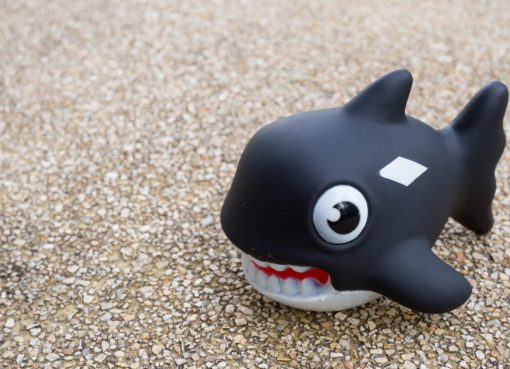Every corporate marketing department in America (and beyond) seems to be piling onto the NFT craze. But sadly for them, most have little impact and are making those businesses seem less relevant rather than the reverse.
Janine Yorio is the co-founder and CEO of Republic Realm, one of the most active investors in and developers of the metaverse real estate ecosystem.
That’s because every NFT project from Adidas to Campbell’s Soup to Budweiser follows a nearly identical format:
- Announce an upcoming non-fungible token project
- Declare that yours will be different from all the others because you spent more money or have a slightly different idea or it is the first of its kind in your industry
- Launch an NFT project that is low risk and non-specific and doesn’t really make anybody feel anything at all
- Desperately attempt to publicize the crap out of it
Culture Week is part of CoinDesk’s Crypto 2022 series, which also includes Policy Week and Future of Money Week.
For the following one to three days, a handful of media outlets will write about it and Twitter may explode with sentiment (though oftentimes, indifference), but then afterwards, nobody will care – not the press, not the company and not its customers.
So why do corporate marketing departments continue to launch these uninspiring NFT projects? Partly because they are afraid to take risks, but more likely because they don’t thoroughly understand NFTs. As their CEO nudges them to “do something in NFTs,” they react impulsively and kick off a project in earnest. Mostly they do it just because everybody else is doing it.
Here are a few things companies need to know to avoid the most common mistakes.
1. How an NFT looks matters very, very little.
Designing an NFT project should center around things like scarcity, innovation and community, but the actual NFT used to designate that community is arguably the least important thing to be designed, and definitely should not be the first or even a primary focus.
Take, for example, some of the generative art projects like Squiggles. To the untrained eye, the artistry of the NFT appears to be thin or non-existent, but to those in the inner circle it is known to be an NFT project of special pedigree. The artistry of the art is not what makes a squiggle valuable.
2. A successful NFT project starts with its community first, built around issues and an identity that the community cares about.
Successful NFT projects start from the ground up, and not top down. Communities aren’t about companies; they are about ideas that bring people together, people who otherwise might not meet except in these NFT communities.
The Toadz project, for example, started as the opposite of the Bored Ape Yacht Club (BAYC-see below), with a more open and inclusive vibe and an explosively growing online community. The community loved this ethos, and so when Toadz did its first drop a few weeks ago, they sold out quickly. Toadz NFTs are not great art – far from it! – but their developers mastered the community aspect before launching the project.
3. NFTs are social currencies that are important to specific communities.
Owning an NFT connotes value and understanding to a very narrowly defined community that others do not understand.
In the Bored Ape Yacht Club NFT project, an NFT profile picture project based around 10,000 ape cartoons of different rarities, the art itself is quite ugly, but that’s precisely the point. The art is designed intentionally to be a deterrent to people who don’t know or understand. It’s an insiders’ club, and one has to be inside to understand the joke. Being an insider in BAYC means either getting in so early one was able to buy at an affordable price or so wealthy that one is comfortable spending hundreds of thousands of dollars to buy an ape at current prices.
Both of these people have intense social currency among the NFT crowd, hence, owning a BAYC ape has become a massive symbol of social status. That status has absolutely nothing to do with the artistic merit of the ape.
4. Metaverse-native brands are currently more valuable than existing corporate brands in this new arena.
In the metaverse, RTFKT’s virtual sneakers sell for a higher price than existing footwear titans like Nike or Adidas. In fact, big corporations are antithetical to the entire ethos of crypto. There is a whole new virtual world in which their brand equity is not yet as valuable as it is in the real world.
These companies refuse to believe it, so they all keep making the same mistake thinking their highly recognizable real-world brand will legitimize the entire space. What they fail to realize is that the NFT and metaverse space is already legitimate, and they are the outsiders. Big corporations are the newbies and risk being tossed from this enthusiastic ecosystem that is highly tolerant of new ideas and quirky projects, but resents big corporations throwing their weight around.
5. NFT projects reward that which is very specific.
Corporations lean toward the generic or else go too far at being quirky that it feels inauthentic. The crypto community is perceptive, and will pick up on this in genuine effort and label it as either a corporate money grab or a lame attempt at seeming relevant. Companies should think about what makes their brand truly unique and cult-like and need to focus on what those superusers want from an affiliation with its product. From there, it should decide if that is a theme it can use to build a base for its NFT community.
6. NFT projects need an ever-evolving roadmap.
Dropping an NFT project with no future plans won’t inspire the community to participate and will instead invite criticism that the project is just a corporate money grab or a cheap marketing ploy. Sophisticated NFT buyers will see right through that. The best NFT projects are constantly evolving, adding layers and nuance to their existing projects and listening to the needs and wants of their community.
7. Not all products should have their own NFT project.
In fact, most products should never have an NFT. There are lots of other creative things that can be done that signal an understanding of the metaverse and NFT ecosystem. Dropping an NFT for a product that is too far outside the NFT fold doesn’t make sense and is probably a waste of time for building brand equity.
8. Most marketing agencies don’t really understand NFT projects either.
Companies should ask any agency pitching about an NFT project to explain their favorite NFT project and what attributes their favorite projects share. Ask to see their OpenSea wallet to see how many NFTs they own and to describe their favorites. Ask what they think of the metaverse and how they envision building a lasting and valuable NFT project that fosters a community that supports your brand. And if they pitch on selling or air-dropping still or video images of the company’s product, run in the other direction.
9. Good NFT projects take time.
The NFT market is saturated. The next wave of NFT projects will be a mix of forgettable derivative projects and also highly innovative and game-changing projects. Which does a company want theirs to be?




